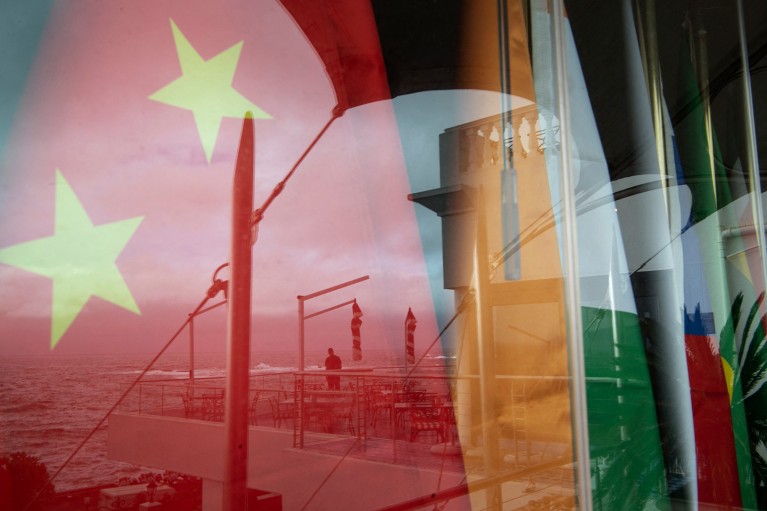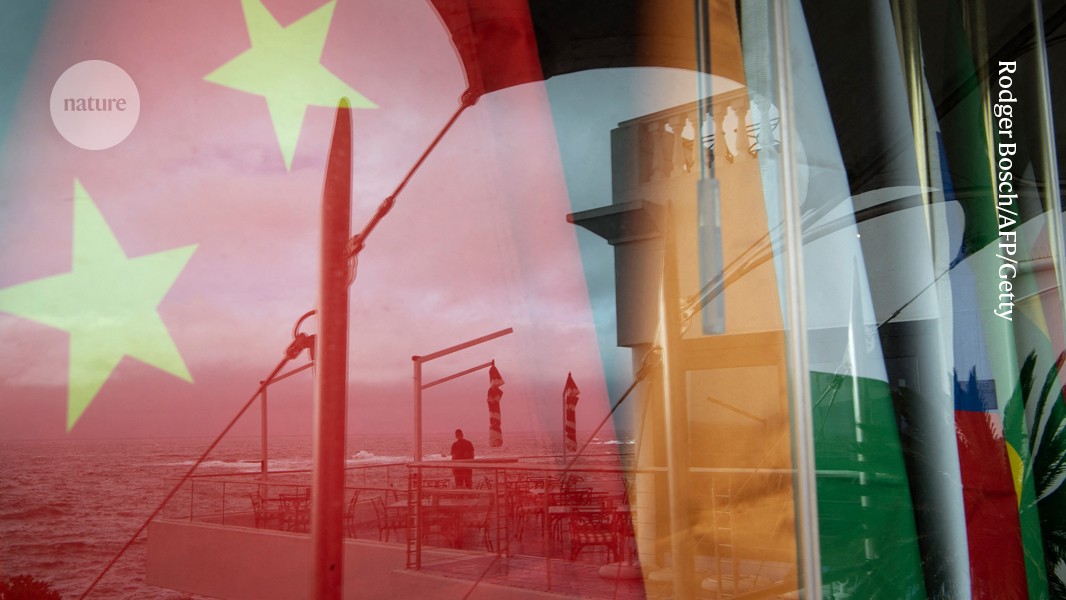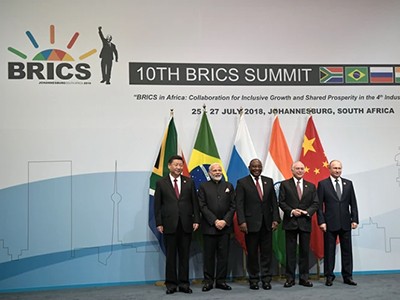
South Africa advertised up to 200 events during its term as BRICS chair last year.Credit: Rodger Bosch/AFP/Getty
When economics researcher Jim O’Neill coined the acronym BRIC in 2001, it was to highlight the potential of four up-and-coming world economies: Brazil, Russia, India and China. O’Neill, who had authored a 16-page research paper for the investment bank Goldman Sachs, couldn’t have imagined that these countries would decide they had so much in common that they would form their own intergovernmental organization.
The first formal summit of the BRIC network was held in 2009. The following year, the group became BRICS when South Africa joined. At this year’s annual meeting, held last month in Kazan, Russia, the group expanded once more, formally admitting Egypt, Ethiopia, Iran and the United Arab Emirates.
‘BRICS’ nations are collaborating on science but need a bigger global platform
The latest BRICS expansion comes at a point at which the network can take stock, review its processes and see how it can fully embrace its collaborative potential. In particular, it should be embracing transparency and inclusion in all it does, not least in science.
Talk to policy researchers and policymakers in high-income countries about BRICS and you will hear decidedly mixed views. Some see it as an ‘anti-Western’ alliance, whereas others dismiss it as a mere talkfest.
Whether justified or not, such criticisms miss a bigger point. BRICS represents a long-held ambition for what is also called south–south cooperation: the idea that nations at similar stages of economic development want to meet and learn from each other. Since its foundation, BRICS has blossomed as one forum for such cooperation.
When it comes to scientific collaboration, the BRICS group has taken an approach almost opposite to that of networks such as the larger G20 (to which all five pre-2024 BRICS members also belong). Formal research collaboration involving G20 nations as a single unit is minimal. However, there are BRICS networks for astronomers, environmental scientists, geographers, life scientists and statisticians, among other fields. This year, new groupings have been announced for researchers in humanities and social sciences, in public health and in nuclear medicine. There’s already a BRICS network of policy-research think tanks, and a grouping of BRICS universities. There is also a network for young scientists (under 40 years old), which will be meeting later this month.
The countries maintaining research ties with Russia despite Ukraine
That makes for a lot of meeting and talking. Each year, a different BRICS member takes the chair and organizes events, and that’s a good thing. India set up more than 100 events in 2022; according to South Africa’s BRICS events calendar, the tally increased to 200 last year under the country’s leadership. But BRICS countries could be doing a lot better in documenting these activities. Some of the biggest beneficiaries could be their researchers, those with expertise who might wish to contribute, but who might not be part of official BRICS networks.
Although the country that holds the chair each year produces a website advertising events and publishes short press releases, with some exceptions these say relatively little about the breadth and depth of activity taking place, including any publications that might emerge. All BRICS chairs should be publishing agendas, aims, objectives and reports from meetings. They should also publish reviews of ideas and proposals being presented.
Just this year, for example, the BRICS countries agreed to develop their own indicators for research evaluation and performance, or scientometrics. That is not a small undertaking. There is likely to be a proposal written by a team of researchers, presented in advance to country representatives for their review and comments; there would be a rough timetable for implementation, and names of people to contact. This needs to be publicly available.
COP26 didn’t solve everything — but researchers must stay engaged
The United Nations, including its Sustainable Development Goals, which the BRICS members are committed to, provides one model for how to do things. UN agencies publish detailed documentation before, during and after meetings. Equally importantly, observers (researchers, representatives of non-governmental organizations, businesses and the media) are invited to witness and report on events. Implementation is often a challenge, as Nature has reported (Nature 599, 347; 2021), but the principle is not in doubt.
The expanded BRICS gives low- and-middle-income countries a platform to share experiences. And the group is expected to become even bigger. Saudi Arabia could be the next to join, with at least another 13 countries understood to be candidates. But this expansion must be accompanied by both inclusion and accessibility of information, at a minimum.
Transparency is a non-negotiable principle in science. As the BRICS group expands, boosting its research collaboration, now is the time to become both more transparent and more inclusive in all of its processes.





